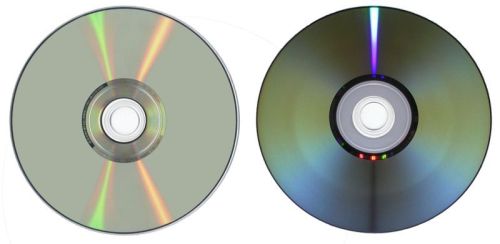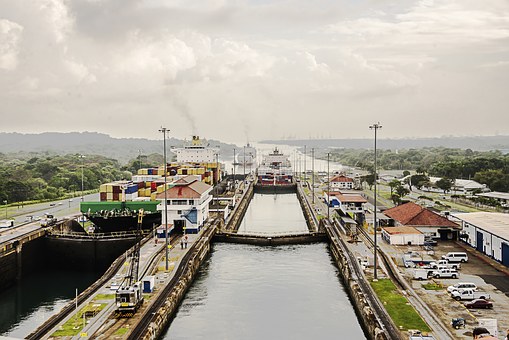Digital Versatile Disks are paving the way toward a new tomorrow in the entertainment industry. With DVDs, home entertainment is looking and sounding better. The digitalization of media offers many advantages to current storage methods. This technology outperforms magnetic recording in the presentation of audio and video quality and storage life. These and other features will make digitized media the standard for the future.
Introduction
Welcome to the 21st century, fittingly dubbed the “Digital Age.” Technology pundits have guaranteed us that the mass digitalization of media will wow the senses. Judging from the stir Digital Versatile Discs have created, this is indeed the case. These Digital Versatile Disks, or DVDs for short, are contributing to the demise of the videocassette. Gone are the times of fast-forwarding to a favorite scene in a movie and manual tracking adjustments. Not only can we forget such annoyances, we also have the chance to view movies at a quality only paralleled in movie theaters. In short, the DVD has just revolutionized the idea of home entertainment. The DVD is an enhanced version of the compact disc, or CD, a technology that that has been around for more than a decade and is the current standard. Video on CD has been around as long as audio has, but storage limitations have prohibited this format from achieving similar popularity. Full-length movies of acceptable quality require more storage capacity than a CD affords. To understand how a DVD can hold more information than a CD, although identical in appearance, one must first consider how they are read.
The Storage Advantage
A key characteristic of digital technology is that all information is stored in the binary format of 1s and 0s. A continuous string in the right combination can be translated into data, music, and movies. The microscopic surface of a CD is covered by miniscule bumps and grooves [1]. These aberrations are non-reflective on an otherwise reflective surface. A laser is used to read the surface of the disc (Fig. 1); depending on whether reflection occurs, strings of 0s and 1s are generated. No reflection corresponds to a value of 1 with 0 being understood otherwise. With use of a digital to analog converter, this string can then be translated into strings of data.
The reason a DVD has a larger capacity for storage is that it can store more bits of 1s and 0s. It does so by utilizing space that CDs currently ignore. This is accomplished by reducing the width between adjacent grooves and tracks [1].

ocrha/Wikimedia Commons
Figure 1: Both sides of a digital versatile disc.
Quality Quantified

Pbroks13/Wikimedia Commons
Figure 2: Diagram of CD layers.
A. A polycarbonate disc layer has the data encoded by using lands and pits.
B. A reflective layer reflects the laser back.
C. A lacquer layer is used to prevent oxidation
D. Artwork is screen printed on the top of the disc.
E. A laser beam reads the polycarbonate disc, is reflected back, and read by the player.
A. A polycarbonate disc layer has the data encoded by using lands and pits.
B. A reflective layer reflects the laser back.
C. A lacquer layer is used to prevent oxidation
D. Artwork is screen printed on the top of the disc.
E. A laser beam reads the polycarbonate disc, is reflected back, and read by the player.
The DVD is made up of several layers, each of which contribute to store data for use (Fig. 2) [1].
Now that we know DVDs can hold more information, how does that translate into better quality movies? What makes the DVD any better than, say, a videocassette? A key characteristic of magnetic recording technology is that its quality worsens with age. A new tape will always play better than a used one. For instance, have you ever rented a video and had to push the tracking button on your VCR just to get a viewable image? This can be explained by the fact that videocassettes hold their information on magnetic tape; extensive use leads to wear on the tape in the form of stretching. This stretching makes it difficult for the VCR to read the tape as it was originally intended [2].
In contrast, the process of reading the DVD does not, in any way, contort the media on it. It is analogous to shining a flashlight on a mirror — the mirror is not harmed in the exchange. However, this is just the tip of the iceberg when it comes to the advantages a DVD has over a videocassette. DVDs offer enhancements to video that are otherwise impossible on videocassettes. First, DVDs allow user interaction. With on-screen menus and guides, users are given options that are otherwise unavailable on videocassettes. For example, users can access chapter menus and are given a table of contents within the movie. Since interactive programs are also digitized, software engineers have been able to encode the programs directly into the movie. So, the transition from an interactive menu screen to the movie itself is seamless, as intended. Within the movie users can control various methods of playback. The movements of the laser are so meticulous and precise that playing a movie at 1/8 speed is possible. The motorized arm, which controls the laser “eye” synchronized with the mechanism that spins the disk, can stop on a nanometric dime with pinpoint accuracy. Utilizing this ability, users can commence playback from any point of the media.
The DVD image quality is far beyond what videocassettes are able to offer. When a camera captures an image, it is immediately translated into an analog signal. Images and sound are compressed and encoded into digital format in order to be stored as digitized media. Digital video data is stored as a series of code words in a complicated manner that causes the average length of the code words to be much smaller than would usually be the case. This is also known as data compression [1]. An analog signal can be converted into a digital signal. At every tenth of a second (bottom scale), the analog to digital converter takes a sample of the signal by choosing a value between 0 and 9 closest to the signal. It becomes obvious upon examination that this method is not precise.
Conclusion
With the amount of space available on a DVD, analog video signals can be sampled with greater precision, capturing the entire analog signal while minimizing error [3]. The result is crisper images and higher resolution. The Winner: In terms of sound, DVDs are also the clear winner. Options and enhancements available on a DVD are numerous, allowing the user to customize his viewing experience. Once again, the advantage comes from the vast amount of space available on the disc and the fact that audio is digitally encoded. Because movies on DVD are digitally compressed, audio tracks are independent of the video, allowing multi-channel surround sound using presentation methods like Dolby Digital or DTS audio compression, the sound formats used in theaters. In terms of sound, DVDs replicate the movie theater experience. Digital Versatile Discs have revolutionized the home theater in many respects. They are more durable than the videocassette and surpass it in quality. It is no longer a question of if DVDs will become dominant in media storage, but when.
References
-
- [1] How Stuff Works. March 10, 2000. < http://howstuffworks.com/dvd.htm>.
- [2] “DVD Demystified, Home of the DVD FAQ”. March 8, 2000. <http://www.dvddemystified.com/dvdfaq.html>.
- [3] Snyder, Mike. “It’s Clear that DVDs are Here to Stay.” USAToday (Dec. 3): <http://www.usatoday.com/life/cyber/tech/review/crg666.htm>
- [4] MPEG Pointers and Resources. October 31, 1999. <http://www.mpeg.org/MPEG/dvd.html>.



